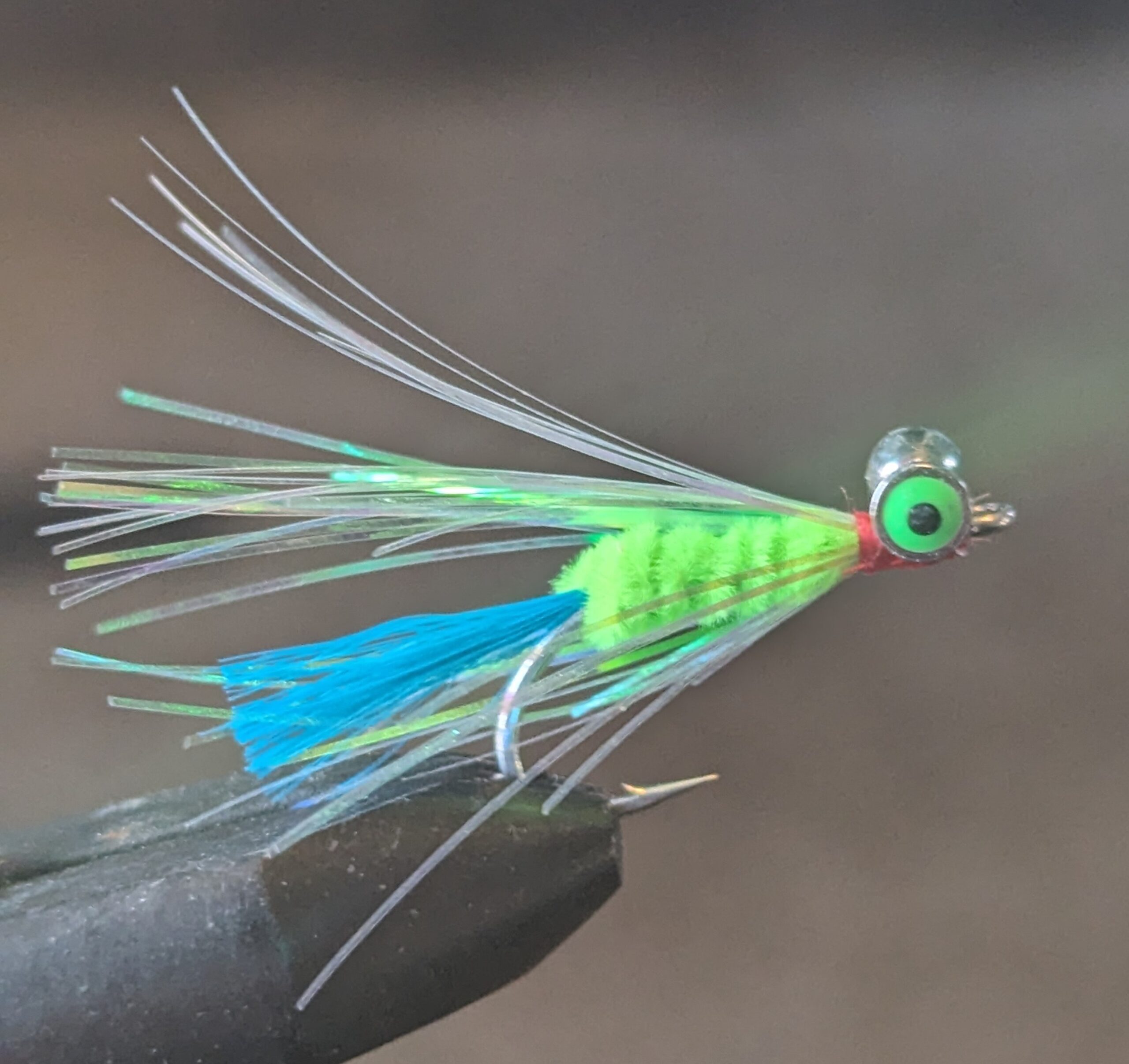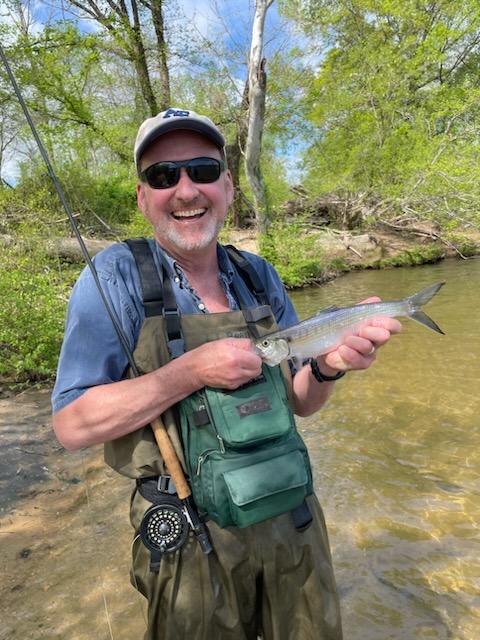By Woodie Walker, Rappahannock Adventures
One of the most exciting angling adventures in Virginia will peak in April on the Rappahannock River in Fredericksburg. The annual return of Hickory shad is an opportunity for all skill levels to catch a dozen or more of these acrobatic fish, commonly known as the “Poor Man’s Tarpon.”
The best part about shad fishing on the Rappahannock River is that it can be done by wading, in and around the rapids that make up the Fall Line. That means it’s accessible to anglers who don’t own a boat, canoe, or kayak. Early in the season, when the water is still cold, I wear hip waders. By early May, I switch to wet-wading in shorts and river shoes. Spinning gear works, but the greatest challenge and thrill is landing these beautiful fish on a fly rod.
Hickory shad are the smaller of two shad species that return each spring to the freshwater pools where they were born. The population of the larger of the two, the American (or “White”) shad, has steadily decreased in recent decades, despite a vigorous stocking program administered by the Virginia Department of Wildlife Resources (DWR).
Hickory shad numbers are holding their own, at least for now, and scientists are tracking their numbers. In 2024, DWR Fisheries Biologist Alan Weaver said the long-term (20-year) catch rate from electrofishing below the Fall Line in Fredericksburg has slightly increased. However, the short-term catch rate over the past 3-4 years is decreasing. For now, at least, some anglers still report catching as many as 50 fish in a day.

The key to fly fishing for Hickory shad is getting your fly as close as possible to the bottom of the river. I tie small, brightly-colored streamers and add weight with brass dumbbell eyes. I use a sink-tip line and cast slightly upstream to give the line a chance to sink during the drift.
A roe-heavy hen Hickory weighs about 2 pounds, and since the current can be very fast in the spring, I use a 7-weight fly rod with a section of 10-pound monofilament for a simple leader. The 7-weight gives me the backbone to land a fish before it’s completely exhausted, plus I can maneuver a foul-hooked fish if needed. I use a small net, so I can keep the fish out of the sand when I catch-and-release.

There is fantastic public access at Old Mill Park in Fredericksburg and Stafford County’s Falmouth Beach, just across from the park. A standard freshwater fishing license is required.
It is legal to keep Hickory shad for use as food or bait. Because of their low populations, it is illegal in most cases to keep American shad and their smaller cousins, the Alewife and Blueback herring (generally known as “river herring).”
Historically, the larger American shad were valued as a subsistence food source by Virginia’s Indigenous communities. American shad were also a valuable commodity during the Colonia Era. Today, smoked (or “planked”) shad and shad roe have sentimental value in Rural Coastal Virginia communities, but both foods are fairly uncommon. The habit of preserving river herring (“salt fish”), is also mostly a thing of the past.
